1980 - 1989
Widespread Presence, Unfocused Potential
The 1980s marked a period of extensive use for Tuffy the Ram across Angelo State University’s campus and community. His image appeared on everything from T-shirts and ASU Coach Caps to ASU Band uniforms and various campus marketing materials. Tuffy also featured prominently on The Ram Page masthead and in editorial cartoons, further embedding him in the visual identity of the university.
Despite this widespread usage, there was a growing sense of uncertainty about how best to maximize Tuffy's potential as a unifying symbol. While his presence was undeniable, the lack of a cohesive strategy sometimes diluted his impact, leaving room for improvement in leveraging Tuffy as a central figure of ASU branding.
This era highlighted both Tuffy's importance and the challenges of fully integrating a mascot into a university's evolving identity.


Social Presence
During the 1980s, Tuffy the Ram found a unique role in Phillip Speck's editorial cartoons for The Ram Page. Often depicted as a determined and hardworking mascot, Tuffy symbolized the spirit of Angelo State University while commenting on key campus and societal events.
This cartoon serves as a visual encapsulation of the Angelo State: Coming of Age editorial's themes. Featuring Tuffy, the university’s iconic ram mascot, carrying the weight of ASU's accomplishments on his shoulders, the cartoon symbolizes the university's steady growth and expanding influence. With references to achievements such as the NAIA football championship, national recognition for the drama department, and high-profile speakers hosted by the university, the illustration captures the pride and responsibility that come with ASU's rise in prominence.
Just as the editorial highlights ASU’s transformation into a respected institution, the cartoon portrays Tuffy as the embodiment of the university's resilience and ability to shoulder the challenges and successes of its evolution. Together, the editorial and cartoon celebrate ASU’s journey from a small community college to a nationally recognized university.
Speck's artistic style blended humor and commentary, using Tuffy as a relatable and enduring figure to reflect the challenges and triumphs of the ASU community. These cartoons reinforced Tuffy's presence as more than a mascot—he became a cultural touchstone for students and alumni alike.
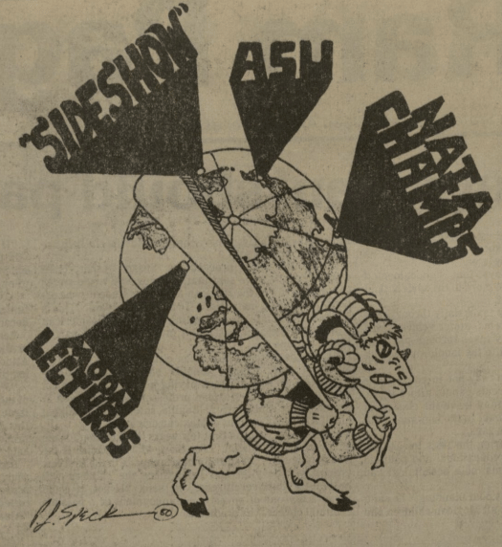


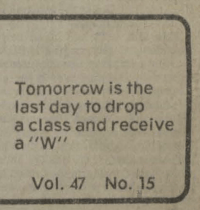
welcoming freshmen
Tuffy played a key role in welcoming incoming freshmen to Angelo State University, serving as a vibrant emblem of school pride and spirit. The iconic ram was prominently featured on admissions packets and materials handed out during campus preview tours, ensuring that students’ first impressions of ASU were rooted in its rich traditions.
These packets, often adorned with Tuffy’s image, not only provided essential information about the university but also fostered a sense of connection to the campus community. During orientation sessions, Tuffy's presence reinforced the idea that new students were joining a proud legacy, becoming part of the "Ram Family" that Tuffy symbolized so effectively.
This integration of Tuffy into the admissions process highlighted the mascot’s role as an enduring ambassador for Angelo State University.
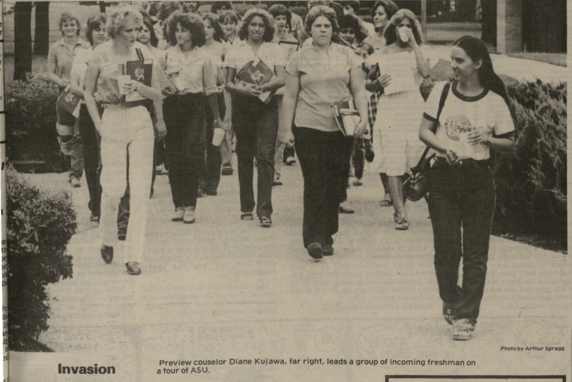

tuffy tops them all
Tuffy's presence extended beyond the playing field and into the culture of Angelo State University’s athletic program. The iconic Ram mascot was prominently featured on the embroidered caps worn by ASU coaches, symbolizing school pride and unity.
These caps quickly became a popular item among students, who admired their coaches and the teams they supported. Many students purchased the caps, integrating them into their own wardrobes as a symbol of their connection to ASU athletics.
The caps became so beloved that they even appeared in students’ yearbook photos, showcasing Tuffy as a unifying emblem of school spirit and athletic excellence.
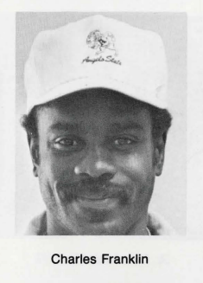



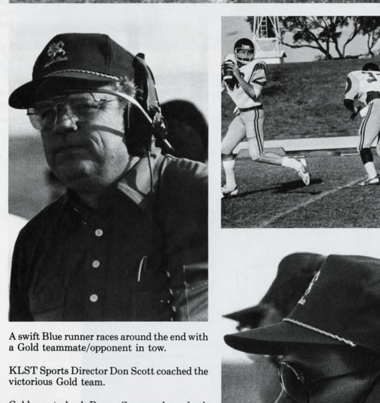

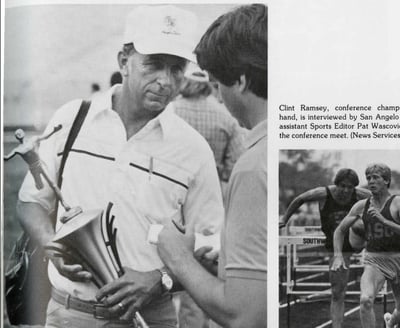

Rally around tuffy
Tuffy's presence at sporting events became increasingly prominent as he evolved into a central figure in Angelo State University’s athletic identity.
-Tuffy's image was a staple at games, from his depiction on midcourt logos in the gym to his integration into cheerleader uniforms.
Cheerleaders donned sweaters, skirts, and megaphones featuring Tuffy's iconic image, which not only amplified school spirit but also connected the crowd to the mascot's energetic and determined persona.
Tuffy became a rallying point for fans, athletes, and the cheer team, symbolizing ASU's competitive edge and pride. His visibility on uniforms and accessories also fostered a stronger connection between the audience and the teams, further solidifying his role as a beloved figure in ASU's athletic culture.
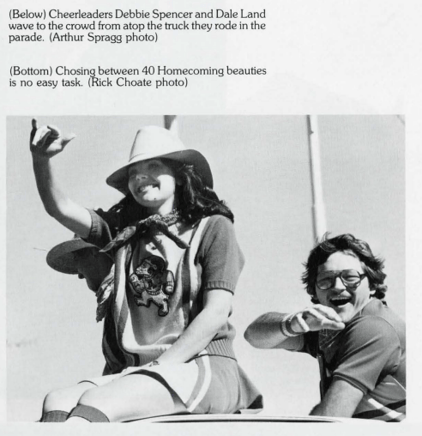

united front
The ASU Men's High Rise Resident Assistants for the 1986-87 academic year showcased their unique identity by designing and wearing custom T-shirts featuring "marching Tuffys," Angelo State University's beloved mascot. The T-shirts were not only a symbol of their role but also a way to build camaraderie among the team and make their presence easily recognizable within the residence hall community.
The marching Tuffys design cleverly emphasized their connection to the university while highlighting their collective spirit as Resident Assistants (RAs).
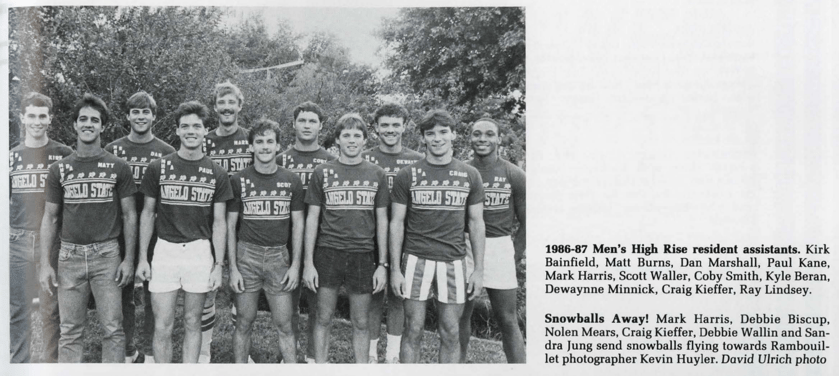

This distinct uniform helped set the RAs apart from the general student body, fostering a sense of unity and pride. It also served as a visual cue for residents to identify the RAs, reinforcing their approachability and availability to assist with student needs.
This creative branding reflected the RAs' commitment to creating a supportive and engaging environment for the High Rise residents, blending professionalism with school pride.




